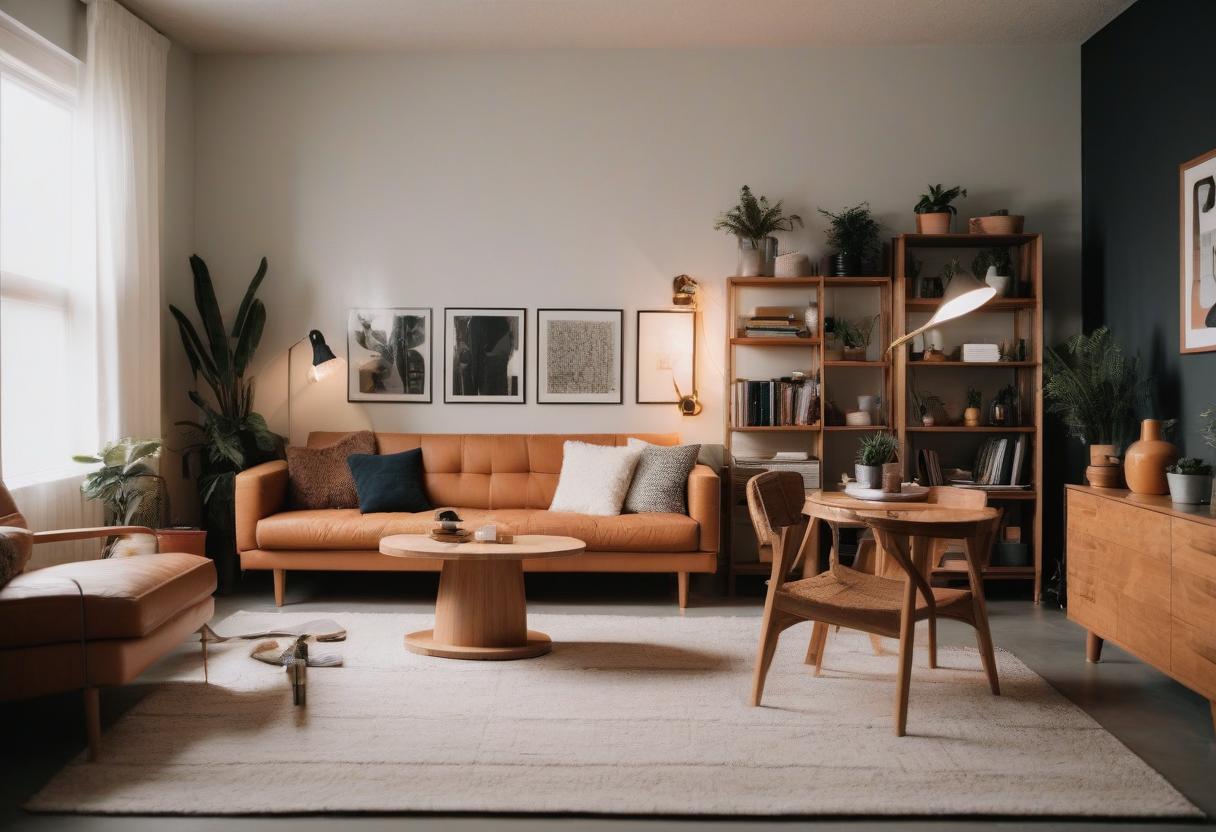Living in small spaces often calls for creativity and clever solutions, particularly when it comes to furniture arrangement. Whether you’re trying to maximize square footage, enhance utility, or add a stylish flair to your home, combining functionality with furniture arrangement is a game-changer.
This blog will explore practical design hacks and layout tips to help you achieve a beautiful, functional space. You’ll discover how to choose multifunctional furniture, optimize layouts, and make your room work harder without sacrificing style.
Why Functional Furniture is Essential

Whether living in a tiny studio apartment or making the most of one room, properly combining form and function is essential. Why?
Space Optimization: Enables efficient use of every square inch of your home.
Simplified Living: Keeps your home organized while maintaining flexibility.
Added Aesthetic Appeal: When thoughtfully incorporated, functional furniture can be a design statement.
When furniture serves double duty, it’s easier to maintain a space that’s both livable and visually pleasing.
Step 1: Start with Your Space’s Requirements

Assess Your Needs
Before arranging furniture, ask yourself these key questions:
- How do you use the space? (Working, relaxing, entertaining?)
- Do you need storage, extra seating, or an area for activities?
- Is multifunctionality important, or can each piece serve a single purpose?
You can design a more efficient setup by clarifying your specific wants and needs. For example, small-space dwellers might prioritize versatile furniture to fulfill multiple functions simultaneously.
Map the Room
Grab some paper, or use an online room planner to sketch a layout of your room. Identify existing elements like windows, doors, and power outlets, which will influence furniture placement. Strategic positioning can create flow and maximize functionality even in the smallest spaces.
Step 2: Invest in Multifunctional Furniture
One of the easiest ways to seamlessly combine utility with design is by choosing furniture that performs multiple functions.
Convertible Sofas and Beds
A sofa bed is an excellent example of functional design. By day, it’s a stylish sofa that serves as an inviting focal point for your living area; by night, it offers a comfortable spot for sleeping. Popular choices include futons, sleeper chairs, and sectionals with hidden pull-out beds.
Expandable Tables
Whether a drop-leaf dining table or a coffee table that converts into a desk, expandable tables are your secret weapon for considerable functionality in small spaces. They deliver efficient solutions for dining, working, or entertaining guests.
Storage-Integrated Furniture
Storage ottomans, bed frames with drawers, and bookcase headboards are fantastic ways to marry storage with furniture arrangements. These furniture items help keep clutter at bay while preserving aesthetic appeal.
Wall-Mounted Solutions
Murphy beds, fold-down desks, or mounted shelves free up crucial floor space, making your room appear more spacious and organized.
Step 3: Master Placement for a Purpose
Functional furniture only works its magic when it’s strategically placed. Here’s how to optimize placement for practicality while maintaining a cohesive design.
Define Zones for Activities
Furniture arrangements should reflect the purpose of your space. Use rugs, furniture placement, or decorative accents to carve out zones, even in open-plan settings.
Living areas benefit from sectional sofas to section off seating spots.
Workspaces might include a slim wall-mounted desk near a window for natural light.
Entertainment zones can utilize TV units with integrated shelving to house gadgets and decor.
Allow Traffic Flow
Clunky arrangements can block natural movement and cramp even a spacious room. Always maintain clear pathways by positioning furniture parallel to walls and doorways. Keep at least 2-3 feet of free space around high-traffic areas like seating and entryways.
Make Use of Vertical Space
Don’t just think horizontally—vertical space offers ample opportunities! Install tall bookshelves, floor-to-ceiling curtains, or even hanging storage to create the illusion of a larger, airier room.
Step 4: Add Functional Decorative Elements
Functionality doesn’t mean sacrificing style. You can enhance the aesthetic appeal of your space using practical decorative elements.
Baskets double as chic decor while hiding clutter.
Mirrors brighten and broaden the room while also adding elegance.
Foldable chairs or Stools can be stored easily and pulled out as guests need.
Think of functionality as an opportunity to experiment with innovative design choices.
Step 5: Prioritize Modular and Flexible Options
Modular furniture systems are perfect for those wanting maximum space flexibility.
Modular Sofas allow you to rearrange seating to fit the room—or your mood!
Stackable Chairs and Tables provide portable, flexible solutions that save storage when not in use.
These options grow with you, making them ideal for renters or those who frequently refresh their spaces.
Step 6: Stay Inspired While Adapting
The perfect functional arrangement may evolve. With every new element you introduce, reevaluate how it fits into your space and works with your lifestyle. Similarly, keep an eye on trends and solutions that inspire fresh ideas.
Pro Tip:
Layer in personal touches like framed prints, plants, and cozy throws to maintain character while adhering to practicality.
Elevate Your Home Today
Small-space living or not, combining functionality with furniture arrangements ensures that every inch of your home works as hard as you do. By investing in versatile pieces, arranging them thoughtfully, and sprucing up the decor to align with your style—you can create a space that’s efficient, comfortable, and 100% yours.
Looking for more design inspiration or personalized assistance? Contact our design experts for tailored advice and solutions to transform even the smallest spaces into your dream home.





